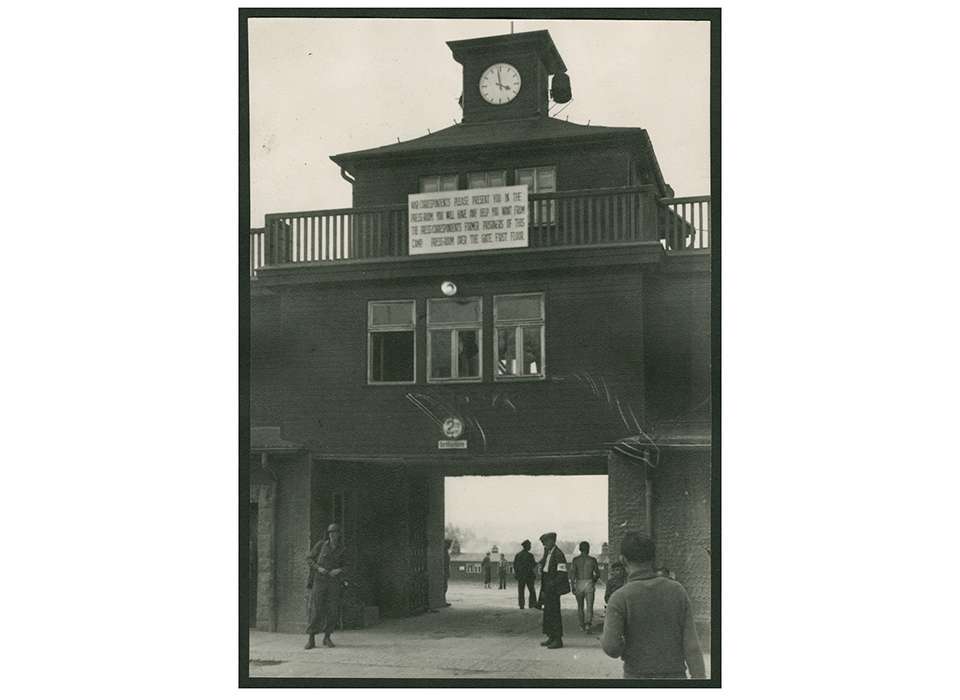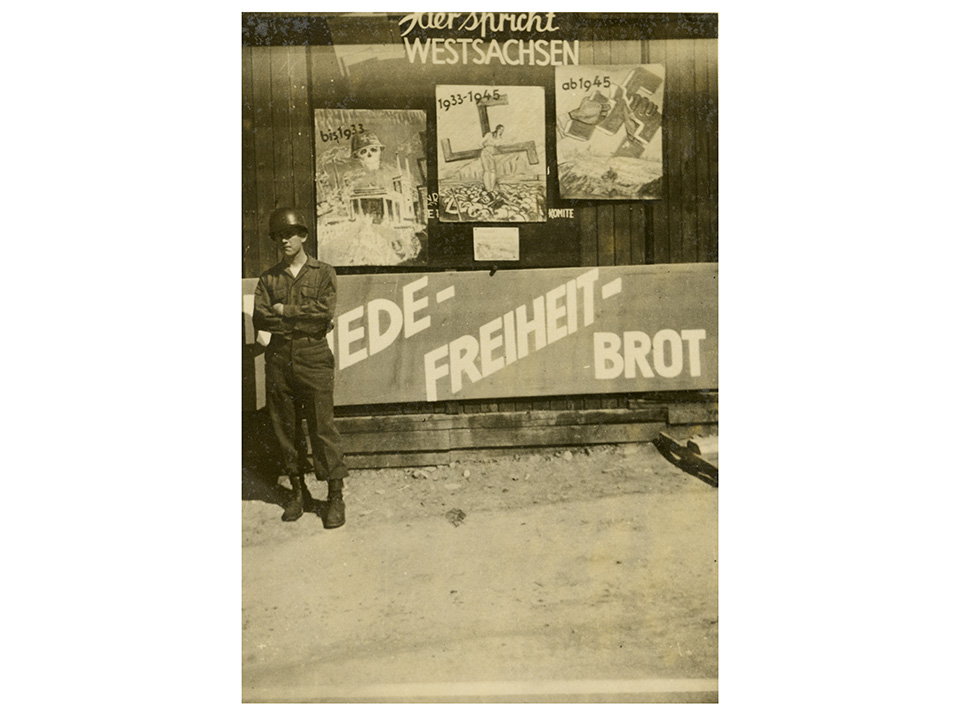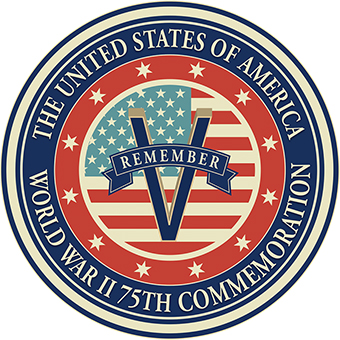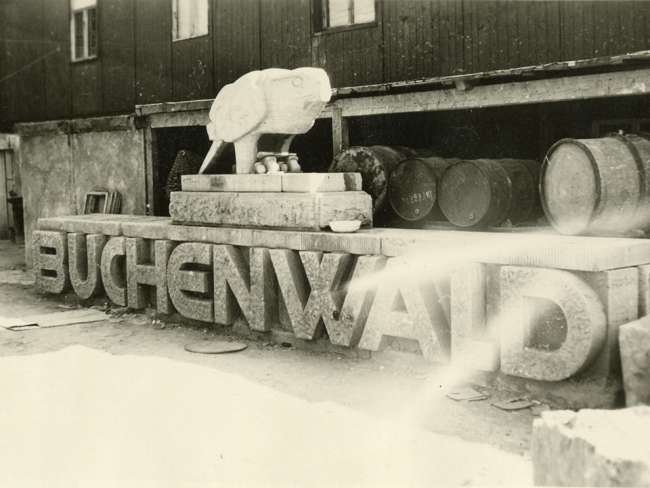Top Image: Gatehouse, Buchenwald Concentration Camp, April 1945. , From the Collection of The National WWII Museum, Gift of Ronello Brown, 2008.002.003.
In the weeks after Buchenwald was liberated on April 11, 1945, American investigators began the arduous task of documenting the atrocities committed in the eight years of the camp’s existence—and the system which facilitated them. For this historical work, so important for understanding the inherent criminality of Nazism, they received invaluable help from former inmates. In what follows I address two of these sources, one from April 1945, the other an oral history done by The National WWII Museum.
On April 24, 1945, two Americans, Egon Fleck, a civilian, and 1st Lieutenant Edward Tennenbaum, released a report about what they uncovered from their visit to the recently liberated Buchenwald concentration camp. Part of the Psychological Warfare Division, they had been ordered to conduct an investigation there for Headquarters, 12th Army Group, General Omar Bradley’s command. Titled “Buchenwald: A Preliminary Report” and marked “Confidential,” this astounding text offers a window on the early perceptions of the United States authorities about what they encountered in that nightmarish place. Two informants, still in the camp, their names kept confidential, were the main sources for information.
In their report, Fleck and Tennenbaum recalled how they came upon a stunning sight: a gigantic column of the liberated from Buchenwald marching eastward in disciplined formation. “They were of many nationalities, a platoon of French, followed by a platoon of Spaniards, platoons of Russians, Poles, Jews, Dutch, mixed platoons. Some wore striped convicts’ suits, some ragged uniforms of the United Nations, some shreds of civilian clothes.” These individuals, observed Tennenbaum and Fleck, were eager to locate the Germans—and to kill them. Given what the victims had been through, such sentiments hardly register any surprise.
Staying in the Typhus Experiment Laboratory and attending a parade organized by some of the former prisoners, the two American investigators learned about how the SS-led hierarchy functioned in Buchenwald. Stories about torture, execution, and medical experiments, too many for them to fully chronicle, overwhelmed them. Rivalries between “politicals” and criminals were recorded. Tennenbaum and Fleck discovered that 168 Allied airmen, whom they mistakenly believed were all Americans, had been incarcerated there in 1944 before being released to the custody of the Luftwaffe. From their questioning they realized one American airman, Levitt C. Beck, had not been transferred with the others but had succumbed to illness. The two investigators seemed surprised to hear that conditions had improved in Buchenwald once Hermann Pister became commandant in January 1942. Pister’s predecessor, Karl Otto Koch, put to death by the Nazis for corruption in the closing weeks of the war, had been far worse.
What is most revealing about “Buchenwald: A Preliminary Report” is the focus on the inmates who were communists. Tennenbaum and Flick quickly realized how well-organized and significant the communists’ underground organization had been. They described how, thanks to the efforts of a Camp Committee dominated by the communists, the American liberators “found a disciplined and efficient organization in Buchenwald.” “Discipline” in fact appears frequently in their descriptions of these leftist inmates, something that both impressed and worried the American investigators. The investigators claimed to have documented a series of brutal actions perpetrated by communists against other inmates, especially the former convicts. On this point, the two Americans equivocate. They acknowledged the severity of the communists as “entirely logical,” a legitimate response to the SS’s “reign of terror,” and contended that “their means were justified by the end,” which they understood to be “to make Buchenwald a better place to live.”
Nevertheless, the report warns about a sense of superiority exhibited by the communists and a tenacious commitment to the “proletarian future of Germany.” These were men who had “lost their human idealism.” Such statements elicited stern commentary from Alfred Toombs, Chief of Intelligence for 12th Army Group. His remarks prefacing the report cautioned, “the report makes it clear that in our search for decent, democratic elements which we can trust in Germany we cannot accept at face value ALL those people who were incarcerated for opposing the Nazi brand of fascism.” In other words, antifascism would not override an already existing anticommunism in the US ranks.
Clinton Gardner was among the next wave of Americans who entered Buchenwald. He got there a week after liberation. Wounded at Omaha Beach and again during the Battle of the Bulge, he had seen plenty of horror in the 10 months prior to his arrival in the camp. But it was a very different sort of horror. Just 22 years old, he was charged with helping set up an administration in Buchenwald.
This meant, he told The National WWII Museum, assuming responsibility for some 20,000-21,000 former prisoners. Gardner spoke French well and knew enough German, so he could communicate. He recalled his exchanges with Camp Elder Hans Eiden, who became the unofficial leader of Buchenwald when the SS fled on April 11. Like Fleck and Tennenbaum, Gardner stressed the discipline and efficiency of the communists. After assessing the situation, he set out to get the inmates home. What he accomplished was incredible. By the end of May, six weeks after his arrival, most prisoners had been sent to their home countries. Only some Poles and Russians remained. When administration of the camp was turned over to the Soviets on July 4, 1945, there were practically no prisoners left. Gardner enjoyed telling his story of meeting Elie Wiesel, who had been in Buchenwald’s infirmary at liberation, years after the war and giving Wiesel a map of the camp he had never seen.
Anti-Nazi Slogans (Peace, Freedom, and Bread) in Buchenwald, Spring 1945. From the Collection of The National WWII Museum, Gift of H. Mike Neal, 2011.344.081.
These accounts from Americans who were at Buchenwald in the immediate aftermath of liberation are absolutely crucial sources. They reveal just how horrendous the conditions were at the site and the challenges of first saving and then repatriating the thousands of men held there. There is far more to the story of the immediate aftermath of liberation, though. Genuine tensions between the US authorities and some of the left-wing radicals arose immediately. From Norman Naimark’s research, we know that plans for a demonstration on May Day were prohibited. American personnel also confiscated red flags displaying the hammer and sickle and burned them. Many of the inmates demanded a socialist Germany and working-class revolution in Europe. For example, Hermann Brill, a socialist, devised a 10-point “Buchenwald Manifesto” calling for political freedom, the extirpation of Nazi elements from German society, the unity of all antifascist forces, and the abolition of capitalism. In what must have been a remarkable moment, Brill’s manifesto was proclaimed in front of thousands of inmates on April 19. Three days later, the communists produced a similar program. When the Soviets arrived in Buchenwald in early July, they displayed little interest in revolution either. Instead, they insisted in their zone of occupation on a return to the Popular Front policies of the 1930s, with communists joining moderate socialists and liberals in coalition governments and postponing radical societal change.
Our understanding of liberation cannot halt at the moment the Nazi camps were freed from the terrors of the SS. It must stretch into the months immediately thereafter. In this period, exciting and apprehensive at the same time to liberators and liberated, we can discern already much that would crystallize as the Cold War antagonism.
This article is part of a series commemorating the 75th anniversary of the end of World War II made possible by the Department of Defense.
Jason Dawsey, PhD
Jason Dawsey, PhD, is ASU WWII Studies Consultant in the Jenny Craig Institute for the Study of War and Democracy.
Cite this article:
MLA Citation:
APA Citation:
Chicago Style Citation:








![Max Fuchs, New York City cantor, sings as Rabbi Sydney [sic] Lefkowitz, Richmond, VA, conducts the first Jewish services from Germany.](/sites/default/files/styles/max_650x650/public/2025-10/image1.jpg)



